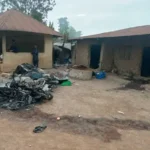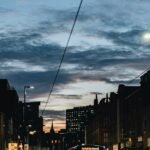- Unbreaking The News
- Work
- Life
- Lifestyle
- HumanityDiscover the latest trends, style tips, and fashion news from around the world. From runway highlights to everyday looks, explore everything you need to stay stylish and on-trend.
- Mental HealthStay informed about health and wellness with expert advice, fitness tips, and the latest medical breakthroughs. Your guide to a healthier and happier life.
- Science & Technology
- Literature
- About Us
- Unbreaking The News
- Work
- Life
- Lifestyle
- HumanityDiscover the latest trends, style tips, and fashion news from around the world. From runway highlights to everyday looks, explore everything you need to stay stylish and on-trend.
- Mental HealthStay informed about health and wellness with expert advice, fitness tips, and the latest medical breakthroughs. Your guide to a healthier and happier life.
- Science & Technology
- Literature
- About Us
Now Reading: Litterbugs and Thieves Go Gently Into That Good Night
-
01
Litterbugs and Thieves Go Gently Into That Good Night
- Unbreaking The News
- Work
- Life
- Lifestyle
- HumanityDiscover the latest trends, style tips, and fashion news from around the world. From runway highlights to everyday looks, explore everything you need to stay stylish and on-trend.
- Mental HealthStay informed about health and wellness with expert advice, fitness tips, and the latest medical breakthroughs. Your guide to a healthier and happier life.
- Science & Technology
- Literature
- About Us
- Home
- Science & Technology
- Litterbugs and Thieves Go Gently Into That Good Night
Litterbugs and Thieves Go Gently Into That Good Night
Science & Technology, Editorial20 hours ago7 Views

A telltale trend in true crime stats dropped out of urban South Yorkshire County, England, this week, and it has rekindled my love for citizen science. Why? I’ll explain that in a moment.
For now, just know this: the trend emerged from a massive analysis of illegal behavior in that one British district over an entire decade. It showed that certain crimes — like burglary, robbery, bicycle theft, or vehicle offences — occur more frequently in the dark.
Conducted by a team of architects at the University of Sheffield and members of the South Yorkshire police department, the study examined all 990,446 crimes committed in the county from 2010–2020, mapping where they occurred and at what time of day. As they described in the journal PLOS One last week, the researchers found a correlation between light and crime, concluding that the risk of certain crimes grew after dark.
Crime-after-dark hotspots in South Yorkshire, England, 2010–2020.
(Image courtesy of Uttley et al. via PLOS One. CC-BY 4.0)
A map of the county with high-crime districts highlighted in orange.
They also identified about two dozen specific hotspots across the county where crime rates are especially elevated in darker places — all of which suggests that urban lighting design could play a role in reducing crime.
Taking a step back for the moment, many other studies have shown, not surprisingly, that dark places instill fear in people. Everyone is afraid of the dark to some degree, whether we admit it or not. And research shows people feel safer after dark in brightly lit places like parking lots. But the relationship between darkness and crime is less clear.
More light, less crime?
Some studies show that if you install better street lighting, crime goes down. But confusingly, crime rates often go down in those places during the day as well. Other studies show no relationship between streetlights and crime rates at all. And some even show places with less lighting see lower crime. Criminals are afraid of the dark as well?
This new study is a breakthrough, however, because it shows a definitive connection between darkness and crime in urban areas, and it defines what specific types of crime, like bicycle theft, are more likely to take place in the dark. All that has rekindled my love for citizen science.
(Photo courtesy of Steve Oberle via LinkedIn)
Monarch butterfly alighting on a marigold bloom of bright colors.
Mushrooms, monarchs, and manatees
What is citizen science? It’s everything, literally. Gazing through telescopes, ripping out invasive plants, taking pictures of mushrooms, geolocating trees, counting butterflies and birds, making soil pH measurements in your backyard, and monitoring your own biometrics for drug discovery. Here are a few specific examples (from a longer searchable list):
- Excavating Sherwood Forest, where Robin Hood once roamed
- Searching for powerful neutron stars (pulsars) on your dusty old desktop
- Helping tag sharks off Ocean City, Maryland
- Tracking Los Angeles, California, urban alley cats
- Developing more sustainable cocoa and heat-stable chocolates
- Submitting poop samples to UC San Diego for mapping gut microbiomes
- Counting birds for Audubon’s 125-year-old Christmas Bird Count
Citizen scientists are a unique set of people. All ages. All places. All walks of life. They are the telescope hobbyists, the do-gooders, the day trippers, the crowdfunders, the ethical hackers, the quantified selfers, the street-marching activists, the land and sea photographers, the storm chasers, the nerdiest of the nerds, and the just plain curious. Many come with nothing more than a smartphone, a pair of hiking boots, and some attitude.
Others invest small fortunes in their art — underwater camera rigs with mirrorless SLRs, floating flashes, wetsuits, fins, tanks, regulators, reef charters, and salty old boat captains thinking “We’re gonna need a bigger hobby.”
They are the unsung heroes of astronomy, climate change, ornithology, wildlife monitoring, land management, freshwater protection, coastal preservation, and rare and neglected disease research. They track coastal landslides, mushrooms, urban coyotes, zombie asteroids, Great White sharks, freshwater pollution, saltwater manatees, invasive weeds in South Australia, feral pigs in Canada, mountain goats in Montana, boreal toads in Colorado, black swans anywhere in the world, and monarch butterflies heading home to Jalisco, Mexico.
(Image courtesy of Harrison Qi via Unsplash)
Two boys digging dry leaves near brick wall
My own first foray into citizen science came more than 25 years ago when I was in graduate school. One of my first pieces of journalism covered a local ecology project in Baltimore that enlisted classrooms in surrounding counties and trained children in these classrooms to take pH, temperature, and moisture readings in their own backyards. Years later, when my very own children were that same age, I got an idea for a citizen science investigation of my own.
I had visions of starting a massive project with my kids and their friends. We would walk along the Rock Creek, our local waterway. We would count pieces of litter dropped as people walked the paved outer path beside the parkway or the overgrown single-track dirt inner path on the banks of the creek. We would do this one day before one of the two big semi-annual volunteer cleanup days the county organizes. And we would map which parts of the park had the most trash and needed the most attention.
I had grand ambitions about what to do with this data. I thought it could steer resource allocation die volunteer clean-ups. The county could prioritize certain stretches of the park for maintenance throughout the year based on these analytics. Then when the small army of well-meaning local residents descended on the park with thick plastic bags and thin metal pickers once or twice a year, they would have a map. The organizers could use the data to stage the volunteers effectively where needed most. I imagined expanding from my little stretch of the Rock Creek to beautification efforts up and down the entire watershed. I imagined
Of course, it didn’t work out that way. My kids were not as interested in my project as I was. Even so, I went out myself one afternoon, full of citizen-science spunk: I came, I saw, I tabulated tin cans.
But even though I had fun crawling through the brush collecting data, I dropped the ball and never contacted the county or the cleanup day organizers. One volunteer cleanup day came and went. And another. I soon forgot about the whole thing, even though what I discovered in my own data intrigued me.
Darkness scorns the witness tattle
My assumption at the start was that I would find more trash in the places that saw more foot traffic—the kids parks along the trail and the places where urban planners placed benches and trash cans for the dog walkers and tired sluggers. Those places, I reasoned, saw more people so they would see more trash. Not so!
I found far more litter in the more remote parts of the park — the rough, unmaintained lone-hiker spurs jutting off the main path into the deep woods. These places saw the least amount of traffic and the most amount of refuse. Why? My hypothesis at the time was altruism. The remarkable influence of a million small, selfless acts. I reasoned that far more litter was dropped in the highly trafficked spots, but that there were also more genuinely nice people in those places who care enough to pick up someone else’s garbage when they see it. Less so in more remote parts of the trail.
But reading about the South Yorkshire police study this week made me reconsider. There’s another mechanism as well, I think. Crime rates increase in dark places, the study teaches. And why not. Criminals love the darkness. It’s their friend. They may fear the dark, just as all humans do, but what they fear more is getting caught. So they work in the shadows. Darkness favors brazen theft and scorns the witness tattle.
So that’s my new hypothesis. Litterbugs love the dark as well — not the darkness of night but the darkness of solitude. They walk in remote sections of park with purpose, I suspect, passing into thick woods and behind dense brush where no one can see. There they drop their trash, thinking: If a wrapper falls in the woods and nobody’s there, does it make a sound?
(Image courtesy of Red Dot via Unsplash)
Crusty, crushed beer can lying among dirt, fallen branches, and dead leaves.
Jason Socrates Bardi
Jason Socrates Bardi is an award-winning health and science journalist and editorial director in Washington, DC. He has written three books about the history of math: The Calculus Wars (2005), The Fifth Postulate (2009), and his upcoming book The Great Math War (Basic Books, 2025). His articles have appeared in the San Francisco Chronicle, Good Morning America, U.S. News & World Report, and The Lancet. In addition to writing and editing, Bardi has published photographs of Nobel laureates in outlets around the world. He lives in Bethesda, Maryland.
Thank you to Yosef Baskin for his inspired edits on the piece.
Related Posts
Business2 days ago
Cadence: I Got Rhythm
Lifestyle5 days ago
When Distance Tests Love
Mental Health1 week ago
Family of Origin
Stay Informed With the Latest & Most Important News
Previous Post
Next Post
Editorial2 days ago
Cadence: I Got Rhythm
Editorial5 days ago
When Distance Tests Love

























